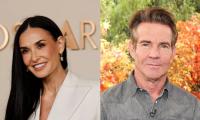PARIS: Denny was an inter-species love child. Her mother was a Neanderthal, but her father was Denisovan, a distinct species of primitive human that also roamed the Eurasian continent 50,000 years ago, scientists reported Wednesday in the journal Nature.
Nicknamed by Oxford University scientists, Denisova 11, her official name, was at least 13 when she died, for reasons unknown.
"There was earlier evidence of interbreeding between different hominin, or early human, groups," said lead author Vivian Slon, a researcher at the Max Planck Institute for Evolutionary Anthropology.
"But this is the first time that we have found a direct, first-generation offspring," she told AFP. Denny´s surprising pedigree was unlocked from a bone fragment unearthed in 2012 by Russian archaeologists at the Denisova Cave in the Altai Mountains of Siberia.
Analysis of the bone´s DNA left no doubt: the chromosomes were a 50-50 mix of Neanderthal and Denisovan, two distinct species of early humans that split apart between 400,000 to 500,000 years ago.
"I initially thought that they must have screwed up in the lab," said senior author and Max Planck Institute professor Svante Paabo, who identified the first Denisovan a decade ago at the same site. Worldwide, fewer than two dozen early human genomes from before 40,000 years ago -- Neanderthal, Denisovan, Homo sapiens, have been sequenced, and the chances of stumbling on a half-and-half hybrid seemed vanishingly small.
Or not.
"The very fact that we found this individual of mixed Neanderthal and Denisovan origins suggests that they interbred much more often than we thought," said Slon. Paabo agreed: "They must have quite commonly had kids together, otherwise we wouldn´t have been this lucky." A 40,000 year-old Homo sapiens with a Neanderthal ancestor a few generations back, recently found in Romania, also bolsters this notion. But the most compelling evidence that inter-species hanky-panky in Late Pleistocene Eurasia may not have been that rare lies in the genes of contemporary humans. About two percent of DNA in non-Africans across the globe today originate with Neanderthals, earlier studies have shown.
Denisovan remnants are also widespread, though less evenly. "We find traces of Denisovan DNA -- less than one percent -- everwhere in Asia and among native Americans," said Paabo. "Aboriginal Australians and people in Papua New Guinea have about five percent." Taken together, these facts support a novel answer to the hotly debated question of why Neanderthals -- which had successfully spread across parts of western and central Europe -- disappeared some 40,000 years ago.
Up to now, their mysterious demise has been blamed on disease, climate change, genocide at the hands of Homo sapiens, or some combination of the above.
But what if our species, arriving in waves from Africa, overwhelmed Neanderthals, and perhaps Denisovans, with affection rather than aggression?
"Part of the story of these groups is that they may simply have been absorbed by modern populations," said Paabo. "The modern humans were more numerous, and the other species might have been incorporated." Recent research showing that Neanderthals were not, in fact, knuckle-dragging brutes makes this scenario all the more plausible.
Our genetic cousins executed sophisticated hunting strategies in groups; made fires, tools, clothing and jewellery; and buried their dead with symbolic ornaments. They painted animal frescos on cave walls at least 64,000 years ago, well before most Homo sapiens arrived in Europe.
Far less is known about Denisovans, but they may have suffered a similar fate. Paabo established their existence with an incomplete finger bone and two molars dated to some 80,000 years ago. Among their genetic legacy to some modern humans is a variant of the gene EPAS1 that makes it easier for the body to access oxygen by regulating the production of haemoglobin, according to a 2014 study.
Nearly 90 percent of Tibetans have this precious variant, compared with only nine percent of Han Chinese, the dominant -- and predominantly lowland -- ethnic group in China. Neanderthals and Denisovans might have intermingled even more but for the fact that the former settled mostly in Europe, and the latter in central and East Asia, the researchers speculated.
A person protesting against a bill in Iowa.— Reuters/File WASHINGTON: A bill removing civil rights protections for...
Riot police clash with protesters who threw petrol bombs outside the Greek parliament. — AFP/File ATHENS: Masked...
A collision between an oil spill cleanup ship and a passenger vessel in central China. — AsiaWire/File BEIJING: At...
A drone demonstrates delivery capabilities from the top of a UPS truck during testing in Lithia, Florida, US February...
A blurred Skype logo.— Reuters/File SAN FRANCISCO: Microsoft on Friday announced it was retiring Skype, the online...
The UN children's agency UNICEF said Friday that it was studying the impact of drastic US aid cuts, with millions of...







